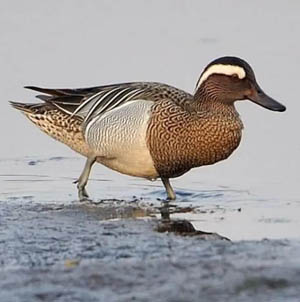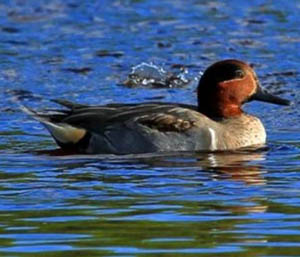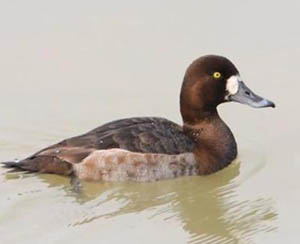
Branta ruficollis
Branta ruficollis,Red-breasted Goose
Red-breasted Goose (no subspecies) is a small wild goose.Brats like to form ···

Anser erythropus
Wild goose,Anser erythropus,Lesser White-fronted Goose
Lesser White-fronted Goose, no subspecies.Small white-fronted geese leave th···

Anser cygnoides
Original goose, with goose, strange goose, black-billed goose, sand goose, grass goose,Anser cygnoides,Swan Goose
Swan Goose, with no subspecies, is a large waterfowl.From late September to ···

Dendrocygna javanica
Tree duck, Ny duck, Screaming duck,Dendrocygna javanica,Lesser Whistling-duck,Lesser Whistling Duck
The Lesser Whistling-duck is a small and medium-sized duck with no subspecie···

Branta bernicla
Branta bernicla,Brent Goose
Brants are typical cold-water Marine birds, tolerant of cold, and prefer to ···

Anas platyrhynchos
Big green head, big red leg duck, official duck, on duck, hemp duck, green side,Anas platyrhynchos,Mallard,Common Mallard
Mallard ducks are large ducks, similar in size and appearance to domestic du···

Anas luzonica
Luzon duck,Anas luzonica,Philippine Duck
The brown necked duck (Anas luzonica) belongs to the family Anatidae. It is ···

Anas poecilorhyncha
Anas poecilorhyncha,Indian Spot-billed Duck,Indo-burmese spotted duck
Mallard, a similar species of Indian grouper, has a similar size, but its bo···

Spatula clypeata
Shovel duck, Broad-billed duck,Anas clypeata,Northern Shoveler
Shoveler ducks often travel in pairs or small groups of 3-5, and can also be···

Anas acuta
Pintail duck, long-tailed duck, long-tailed duck, rifle duck, middle duck, northern pintail duck,Anas acuta,Northern Pintail
Pintail duck is a medium-sized waterfowl of the class Aves and the family An···

Spatula querquedula
Spatula querquedula,Anas querquedula,Garganey,Ducklings, little stone ducks, brook ducks
White-browed ducks often move in pairs or small groups, and also gather in l···

Sibirionetta formosa
Ba duck, black-rimmed duck, spectacled duck, yellow-tipped duck, king duck, shaking duck, Yuan duck,Sibirionetta formosa,Baikal Teal
The Mandarin duck is a kind of duck that likes to gather in groups, especial···

Anas crecca
Little duck, little teal, little mallard, duck, duckling, clam duck,Anas crecca,Common Teal,Green-winged,Teal Eurasian Teal
Green-winged ducks like to gather in groups, especially during the migration···

Anas carolinensis
Anascaro linensis,Anas carolinensis
The American Green-winged Duck (Anascaro linensis) was discovered by birdwat···

Marmaronetta angustirostris
Marmaronetta angustirostris,Marbled Teal,Marbled Duck
The Clouded Duck often moves in small groups. It often gathers in large grou···

Netta rufina
Big red head, red-billed pochard,Netta rufina,Red-crested Pochard
Red-billed Pochards are slow-witted and not very afraid of people. They are ···

Aythya valisineria
American Rock Goose,Aythya valisineria,Canvasback
Sailback ducks are migratory birds. They migrate regularly between their bre···

Aythya ferina
Red-headed duck, sandpiper, sandpiper,Aythya ferina,Common Pochard,Pochard,Northern Pochard
Commonly seen in open waters with reeds and good cover, they live in open la···

Aythya baeri
White-eyed duck, Oriental white-eye duck, Mallard duck,Aythya baeri,Baer's Pochard
The blue-headed duck is a migratory bird. It migrates from the wintering gro···

Aythya fuligula
Marsh duck, crested duck, black-headed duck,Aythya fuligula,Tufted Duck
The Crested Pochard is a migratory bird. Every year in late March and early ···

Aythya marila
Bell duck, Oriental clam duck,Aythya marila,Greater Scaup,Scaup
The Spotted Duck is a migratory bird. It begins to migrate to China for wint···
